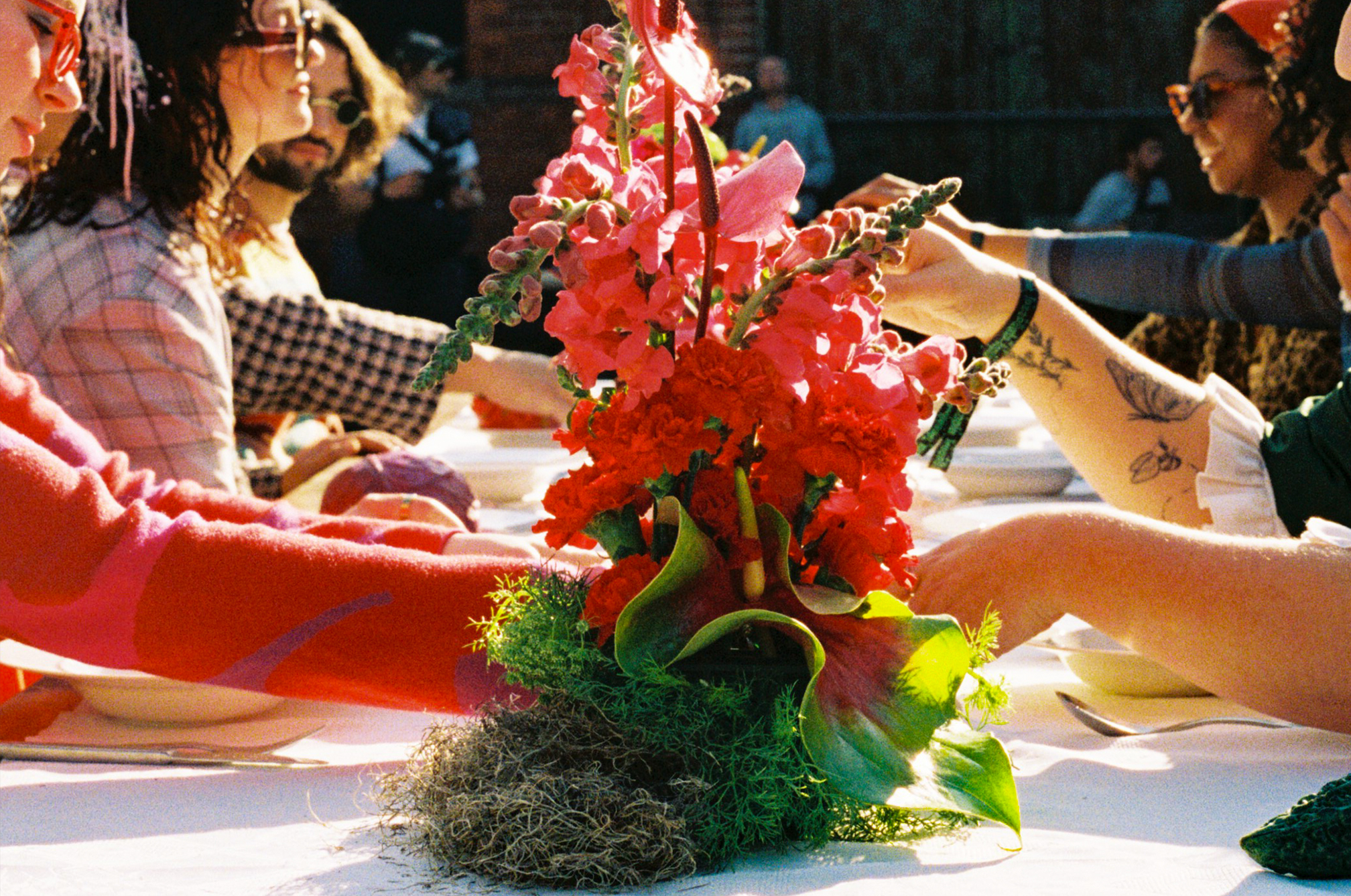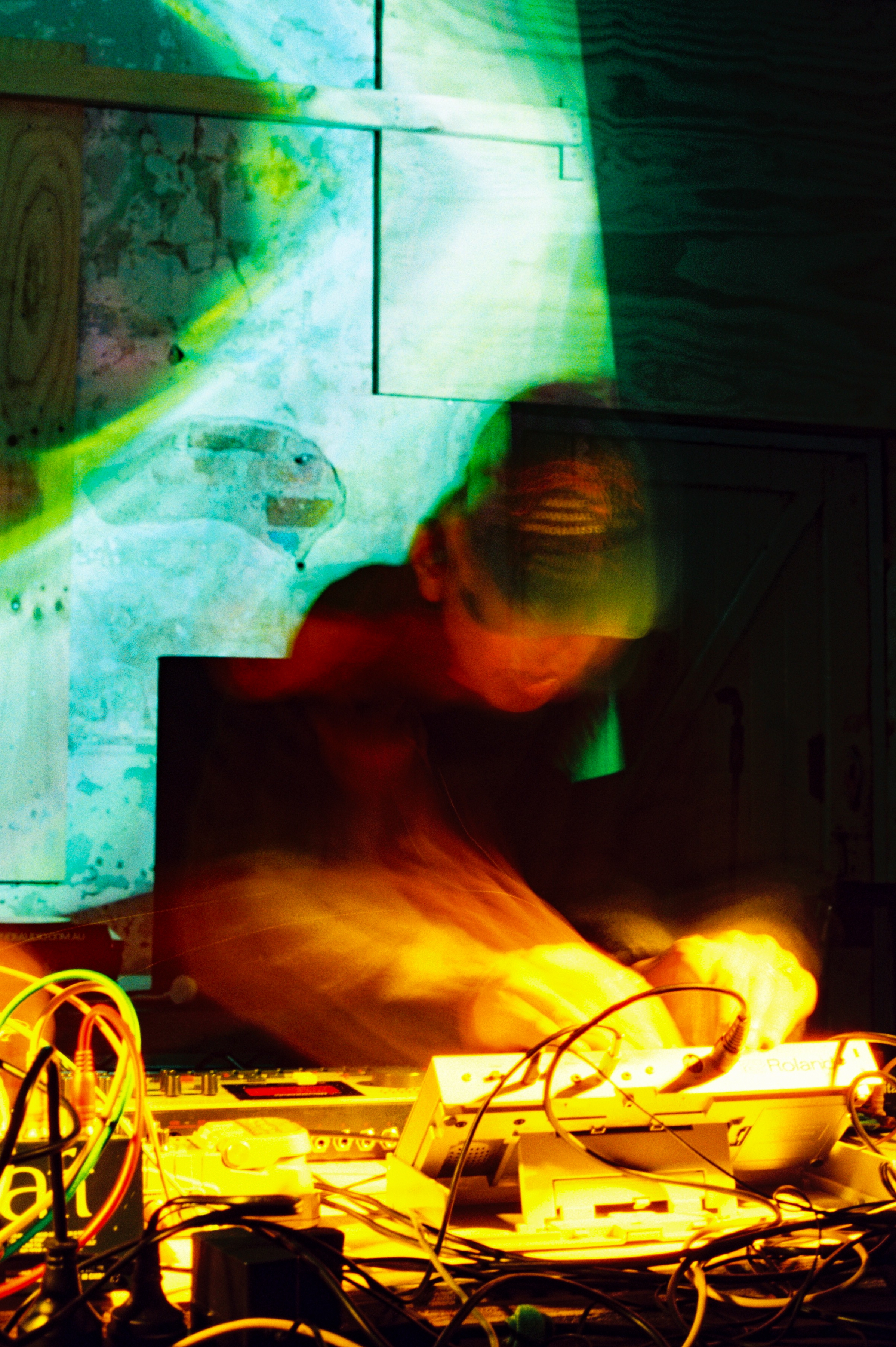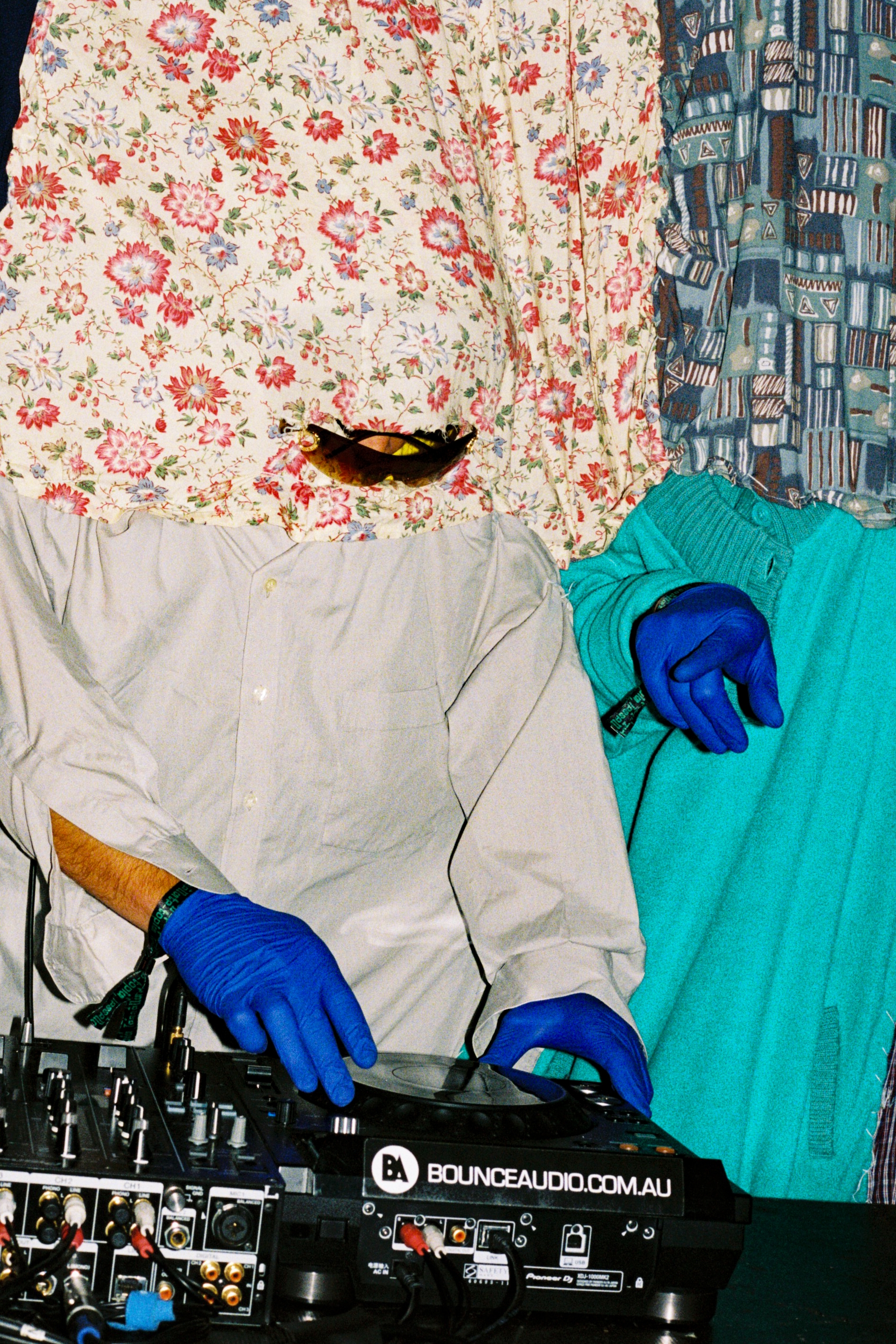 FEATURES
FEATURES
Many hands make lighter work at Tessellate-topia
The Naarm event's first year was a case study on what it takes to run a grassroots festival.
“I keep hearing from people involved in the industry that this is probably the most challenging time to put on something like this,” says James ‘Benji’ Benjamin, “But the way that I look at it, is if we can make it work now, then we'll be able to make it work forever.”
It’s been a week since the closing of Tessellate-topia’s inaugural festival - a rapacious day-to-night arts event tilting on the amoral and hedonistic at Melbourne’s heritage listed Abbotsford convent. Benji, a co-director beside Kevin Weffer, reflects on the day.
“We wanted the festival to have a specific kookiness,” he says, “I feel like I’m a weird guy, we’re all weird people and we wanted to build a festival that would be surprising.”
In a span of time when major festivals in Australia have been canned, closed and fallen into the ether, the landscape for innovating a first year festival isn't necessarily at its tip-top best. But still,Tessellate-topia emerged as a passion project to breathe fresh life into a post-Covid Melbourne.
Over 12 hours on the 27th of September DJ’s, producers, visual artists, and roaming live installations were brought together to fulfill a theme of Dystopia and Utopia. A festival that explored the hellish depths of the mind but also the utopian heights of community and light. On the bill were 52 acts which included sets from Melbourne DJ favourites Darcy Justice and Caucasian Opportunities b2b with Stev Zar, as well as live sets from acts like Polito (whose hybrid set included in-house improvisational dancers) and Proto Moro. On the international front Romanian duo & dj producers, Khidja, had audiences pulsating, alongside Di Linh & Loa Szala. Same went for performances from powerhouses on the rap and R&B scene, Pookie and JUPiTA.
But smaller festival organizers throwing an event in a mass exodus of festivals is no easy feat. Where does the money come from? How is it organised? Who’s involved? And where does one even begin?

The journey to Tessellate-topia started approximately two years ago with the festival originally existing as a pitch to be included in Now or Never - One of Melbourne’s largest multifaceted arts festivals.
“We started putting together a proposal,” says Benji, “and in doing so we formulated the vision. We got shortlisted but there was a lot of competition and we didn’t get through in the end.”
Securing grants, it seems, would be the hardest part of the process.
“A big hit was that we didn't pick up a grant,” says Kev, “I think we applied for six grants and weren’t successful with any, which is a bit of a shame.”
Grants do in fact exist in every state. The only problem is that these grants are usually reserved for festivals with proven results and on a bigger scale. These grants also have requirements that mean innovative arts festivals, like Tessellate, need reworking to fit the criteria.
“You kind of have to hide certain aspects of things just because it might be too creative, or too out of the normal,” says Benji, “You have to make things consumable for all ages and all people. You need to tick the boxes to obtain a grant and we just couldn’t.”
-
With a spate of festivals having the wind removed from beneath their wings in the last year, including Splendour in the Grass, Falls Festival, the list goes on, the NSW and Victorian governments scurried to supply emergency funding and large-scale grants to their music sectors.
While the Victorian government boosted $3.9 million dollars into the live music sector with 22 festivals securing up to $50,000 each, the NSW government unveiled a two-year Contemporary Music Festival Viability Fund that offered emergency cash to various events. But good things can often be shrouded in controversy, and criticism arose around grants going to large-scale backers like Live Nation who exist as multinational entities and whose investors don’t always live in Australia.
“Grant givers want to make sure their money is being invested in existing festivals. They're not going to be wasting their money,” says Kev, “More often than not, it goes to a collective or an event that already has put some events on on that scale”.
He adds, “In my opinion, it goes against the whole purpose of grants, because it should go towards emerging collectives that make events happen, otherwise it wouldn't happen. But that's just the reality of it.”

While self-funding isn’t a viable option for many young entrepreneurs, years of smaller club nights and dozens of other successful events gave Tessellate organisers a leg to stand on. All three also had their own day jobs that they worked concurrently with the festival's organisation: Alana in fashion design and product development, Benji in about a dozen other curation and events projects including a chess club and Kev as a bartender and events manager.
“I think a big thing was, we went way over budget,” says Benji, “but we were happy that that ended up being the case because I think it’s better as a standalone thing.”
While funding from corporations is great, what self-funding has given the festival is more room for experimentation. This means the artists, the vision and the organization are on the terms of ‘little guys’ involved.
“We wanted it to be a hub of inclusivity, equality and collaboration,” says Alana Leptos, head of installations, “We wanted to create a community that was like a Topia and a space where we could innovate.”
Over eight months, starting in February of this year, the festival began the physical nature of planning - the countless meetings, the securing of location and, importantly, the employment of artists.
Like many young and liberal festival organisers living in Melbourne, Tessellate’s ethos was to uplift the voices of the community. Not just the music community, but the visual arts. Roaming sculptures from legacy-artists like Snuff Puppets and a roaming cult enamored festival goers on the day as they roamed the Abbotsford Convent gardens. Inside, artists like Hera Wing displayed alienesque, fantastical figures. A giant red wormhole winded through rooms for guests to wander inside and ballroom royalty in The House of Silky provided non-traditional entertainment usually reserved for the queer underground.
While these additions to the festival proved to push the budget to boiling point, when it came to the overall Topian theme, there was no room for compromise.

“I know a lot of people that have run their own festivals or are continuing to and in their first years the budget involved was a third of what ours was,” says Benji, “They’d be like ‘Artists fees are so much more bendable’, and then hearing what we spent, they're like, ‘oh, but why don't you cut back on this and this?’ But it's important to have artists involved that are on the same page.”
Alana adds, “The reason for it being so much more expensive is also things like the cost of fuel, the cost of labor in general has gone up. Post-Covid everything is up across the board.”
Much of the heavy lifting on the day relied on volunteers who were friends or students studying events from local universities, and in the days before scurrying through the convent with their own designated jobs. It was a bee's hive of activity. Fifty to a hundred people bled through the premise each with their own designated role. Benji and Kev, overseeing the controlled madness, watched on as stagehands set up the stages, bartenders batched the cocktails, truck drivers delivered the speakers and door people cut up the tags. A lone map in the control room was used as an altar to delegate the tasks and walkie talkies could be heard echoing around the stone rooms. The day after the festival, they’d do it all again but in reverse, and this time, burnout was the real villain.
“People post-covid, and people don’t really like to talk about it, are extremely burnt out,” says Alana, “We’ve been hustling so hard for so long that the week before it’s a real slog to get it done. We were just running on adrenaline at that point.”
“New challenges also arise in running a festival in a heritage listed space. One piece of tape on a wall is a no-go. Nothing can be touching,” adds Benji.
Another aspect of the festival that proved difficult however, was the elephant in the room: the cost-of-living crisis. Ticket sales in the last year have contributed to the downfall of many festivals in the Australian circuit. For Tessellate it wasn’t any different.
“I think that all comes down to disposable income. People are really being selective with how they're spending their money,” says Alana, “because dollars are so tight, we needed to be transparent in ticket prices and brackets to allow people to factor it into their budget.”
While Tessellate didn’t necessarily sell enough tickets to cover their costs, that makes sense for a festival in its first year. However, one thing they did have on their side was being a one-day inner city festival differentiating it from it’s 3-day counterparts that take ample more planning.
“The sale per ticket was extended beyond what we would have liked just to cover our costs.” says Benji, “They could have covered the costs if we sold enough but we also could have maybe offered a cheaper ticket, but that's the kind of foresight we’ll have for next year.”
Being the group's first festival “it was basically like charting uncharted territory,” says Kev. For him the documentation, the logistics and making sure the permits on site were in order provided the biggest challenge.
“But now we have a blueprint for that, so we know we can only just improve on what we've worked on next year,” Kev adds.
For next year, and moving forward, Benji says that instead of eight months they’ll extend the planning process to 12. Mostly, “it’s about working with the right people, who won’t just say no but find a solution,” says Benji.
-
Find Julie Fenwick on Instagram.


